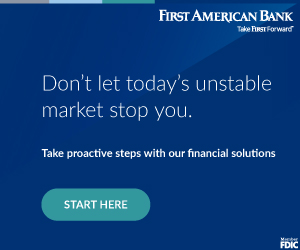Rising costs and ongoing supply chain disruptions are common and constant challenges in business today. From persistent port bottlenecks to soaring interest rates, current market conditions delay shipments, increase lending costs, and necessitate quick pivots to save profits. Businesses must take proactive steps to preserve bottom lines and obtain reliable deliveries. Letters of credit are a way to accomplish these goals.
Letters of credit are an asset-based credit structure that provides a bank guarantee of payment. It encourages trust between sellers and buyers while facilitating growth amid volatility. The many forms of letters of credit (import letters of credit, export letters of credit, and standby letters of credit) can protect your business against supplier risks and offer significant cost savings.
Discover how letters of credit streamline supplier relationships and bypass interest costs so businesses can expand supply lines with more urgency and less uncertainty.
1. Build trust with new suppliers
When supply disruptions strike and current suppliers face delays, businesses must seek new suppliers to fill the supply gap. However, new suppliers often place a heavy cash burden on  new business relationships. With no payment history, suppliers often require upfront payment before shipments arrive to build trust. Upfront payment can be required when products are ordered. It can take as many as 120 days before products arrive, yet the business can’t make money back until they can sell the product. Also at risk are suppliers who may renege on delivering an order.
new business relationships. With no payment history, suppliers often require upfront payment before shipments arrive to build trust. Upfront payment can be required when products are ordered. It can take as many as 120 days before products arrive, yet the business can’t make money back until they can sell the product. Also at risk are suppliers who may renege on delivering an order.
Letters of credit reduce the risks associated with doing business with new suppliers and offer an alternative to advance payments. They provide a bank guarantee of payment if buyers default. With this assurance, suppliers know they won’t be cheated and can make sales on credit. By allowing businesses to pay when goods arrive, letters of credit shorten the time between product payments and customer purchases—preserving crucial liquidity.
2. Avoid high-interest payments
In a world of rising interest, securing a loan to pay for goods or products months before potential sales means extensive interest charges. With interest climbing to 7% or higher and accumulating when the loan is originated, it is important to weigh your options.
A letter of credit allows businesses to pay low annual fees and no interest for the duration of the product transport. For example, the typical fee for a $1 million letter of credit is 2% per year. The cost can be even lower for businesses with more substantial credit and long-lasting relationships with bankers.
3. Protect against the risk of fraud
Buyers face a real risk that suppliers may never deliver the purchased products. Without a binding guarantee of good delivery, businesses could lose millions of dollars and face product shortages.
Letters of credit eliminate this danger by providing fully-customizable transaction terms. Businesses can use a letter of credit to protect against the risk of non-delivery. Buyers can include any terms they negotiate with sellers, including legally-binding conditions that stipulate they are only obligated to pay when shipments arrive.
Driving real-world business success: a customer highlight
Shipping delays and high borrowing costs threaten profits and customer relationships. Still, letters of credit provide security in a world of uncertainty. Take the example of one long-term First American Bank customer who used a standby letter of credit to build supplier relationships and expand their sales volume.
In the aftermath of the pandemic, like so many businesses today, this importer faced supply chain obstacles and an immediate need for new overseas suppliers. As a customer, our team quickly created a personalized solution for this bump in the road. Under the guidance of First American Bank, the customer was able to accelerate growth by using a standby letter of credit. The business was still the primary payment source, but the bank became a backup source in case of a default.
With this asset-based credit solution, the customer was able to fill supply chain gaps by obtaining products from new suppliers without considerable cash advancements and interest payments.
Reliable financial partners in an unpredictable world
Though the current supply chain obstacles may fade in the future, new obstacles will always arise. Businesses must quickly shift supply lines across the globe and deploy capital efficiently. A long-term relationship with First American Bank can help your business through the current crisis and guide you through any obstacles you may face down the road.
Our business experts are here for the long haul—helping you through growing pains and market shocks. First American Bank specialists will enable flexible pivots as your business expands with financial solutions designed to help you scale in the best and worst circumstances.
Continue business growth despite supply chain roadblocks and price increases.
















